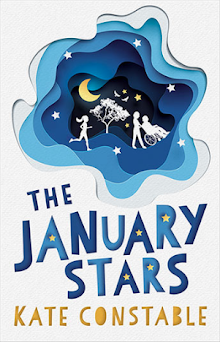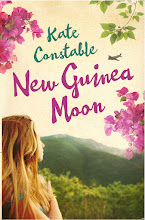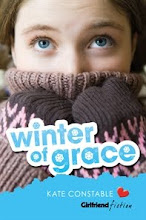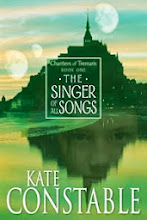30.12.22
First Knowledges
28.12.22
The Passion of Private White
I grabbed Don Watson's latest book, The Passion of Private White, from the library after hearing the author speak about it on the radio (the way I usually hear about new books these days). Ostensibly the story of Neville White, an anthropologist who has worked for many years in an Arnhem Land community and has ended by forfeiting his academic 'objectivity' to intertwine his own life with those of his Indigenous 'subjects,' The Passion of Private White is actually more about the Yolgnu people of Donydji -- their searing history, their complicated personal politics and their never-ending battles with well-meaning but inflexible and short-sighted bureaucracy.
This is a devastating book, setting out in Watson's limpid, carefully controlled prose, a litany of cultural clashes and personality conflicts, the history of a fifty year relationship between one man and a community, with all the trust and affection, the misunderstandings and jealousies and resentments, that any fifty year relationship contains. But the difference between Neville White and the other do-gooders from down south is that he has stuck around, finding a way to heal his personal Vietnam trauma through his deep involvement with Donydji, and drawing in some of his fellow veterans too. It's inspiring, but also dispiriting, to read about houses built and workshops set up by the veterans at a tenth of the cost and time that government contractors would take; and it's dispiriting, too, to see the failures of some of those efforts, because people are people, and things are complicated.
But there is hope here, too, of a different way of relating to people in remote communities and making things better -- with respect, and listening, and patience, and a stubborn, persistent kind of love.
26.12.22
The White Witch
I have no conscious memory of reading Elizabeth Goudge's The White Witch before, but I think I must have read it in high school, because in retrospect I'm sure I was influenced by certain elements of this novel. There is the English Civil War setting -- I went on to study the Civil War at university. There is Froniga's expertise in herbal cures, and especially her reading of the tarot cards, both subjects which sparked my imagination.
But I couldn't remember much of the actual plot, perhaps because, as usual with Goudge, there isn't a whole lot of action, despite being set during a war and even featuring a few battles. For Goudge, the really interesting struggles are all internal ones, like renouncing love or surrendering to God's will.
There are some aspects of this book which haven't aged well since 1958 when it was published, notably the painter Francis Leyland's romantic yearning for eight year old Jenny. Though they don't get together until the end of the book, when she is safely grown up, it's still, as the kids say, ick. But there are lots of parts I loved, particularly proud, competent Froniga (her name is a version of Veronica), who is really a heroine to look up to -- and I think I did!
I don't think Elizabeth Goudge ever wrote a novel, either children or adults, that doesn't feature children at its heart, and she does write them exceptionally well, whether it's self-possessed Jenny, her self-important twin Will, or the wild gypsy children who flock to Froniga 'like birds.'
22.12.22
The Shadow Guests
Another book I picked up in an op shop that I was delighted to discover. As a young reader, I fell in love with The Wolves of Willoughby Chase (and was lucky enough to have my copy signed by the author at The Little Bookroom), and also later became a fan of Dido Twite's adventures, as well as Aiken's wonderful short stories. But this standalone novel, 1980's The Shadow Guests, was new to me.
Poor Cosmo has come all the way from Australia, where his father had unsuccessfully tried to avoid a family curse, and meets a hostile reception at his new school. However, in the tradition of Green Knowe, the ancient family home of Courtoys Mill is far more welcoming, and Cosmo soon encounters several ghostly figures, who are all also victims of the curse on the family, and in their different ways, help him to deal with it.
This is quite a dark book, despite the echoes of Green Knowe; family tragedy, grief and loneliness hang over it. The modern reader shakes their head as Cosmo's new headmaster, quite wise in other ways, advises him not to talk about what he's been through. The meeting with seventeenth century Osmond, member of the Hellfire Club and dabbler in black magic, is also pretty scary, as is the sombre reality of the curse. But I loved cousin Eunice and her willingness to speculate on things beyond our ken, in spite of being a scientist.
The Shadow Guests is packed with characters and atmosphere and a great time-twisty premise, and I think it would appeal to contemporary readers and fans of time-slip and ghost stories as much as it did to me.
20.12.22
The Dolphin Crossing
The explosion stunned John...'Pat!' he called. 'Pat, where are you?''Here,' said a voice at his feet. Pat had been knocked over by the blast. He scrambled up again, and they looked for the little cruiser. There was not the smallest trace of her. Pat was looking at John in alarm. And John realised that there was a nasty, hot, wet feeling in his left arm. He looked down at it, and saw that he was pouring with blood. He felt weak and faint.
18.12.22
Our Castle By The Sea
The atmosphere of fear and suspicion in war-time was really well explored, though unfortunately the book was marred for me by the revelation of an almost pantomime villain at the very end. I did enjoy the twists and turns where seemingly friendly characters became untrustworthy, and sinister ones ended up being more heroic than they first appeared. I found this cover very appealing -- note the green-painted lighthouse, another detail I wasn't aware of previously. There is even a touch of the supernatural in Petra's relationship with the standing stones, the Daughters of Stone, and the dangerous sandbar called the Wyrm that haunts her dreams.
Our Castle by the Sea is a beautifully designed book that approaches questions of loyalty and betrayal from a fresh angle; and one spooky element for me was the description of the boat-shaped church that also featured in Storm Ahead.
13.12.22
To The Islands
To the Islands is a truly remarkable novel. Written when Stow was only 22 (!!), it won the Miles Franklin Award as well as the Australian Literature Society Gold Medal in 1958. It's extraordinary to think that this book was written 64 years ago and yet the issues that it deals with are still as thorny and relevant as ever: relationships between First Nations peoples and white colonisers; relationships to country; different kinds of knowledge; the anguish of dispossession and slaughter; inherited trauma.
To the Islands is a short novel, but not an easy one to read. Its pages are filled with pain. This might have been one of the first works of Australian fiction that treats Aboriginal people as fully rounded, complex characters in their own right, rather than as a backdrop to white drama. Stow stated that part of the intent of the book was to argue a case for supporting the church mission stations, which as he saw it, provided essential services, education and protection to the people dwelling on remote lands. Others may not agree with this assessment; but the fact remains, it's still a wickedly difficult problem to draw the balance between preserving culture and traditional knowledge of country, with access to medical help, educational opportunities and even basic services like power and water that other Australian citizens expect as their right.
To the Islands is an astonishing, insightful, angry and grief-filled novel from a very young author. I'm very glad to have read it.
10.12.22
French Braid
Anne Tyler is one of the most reliable authors I know -- I can pick up one of her novels with complete confidence that I'm in safe hands and that I will enjoy the ride. In French Braid, Tyler returns to familiar territory: an inter-generational family story set in the suburbs of Baltimore.
The novel opens in 2010, with an encounter at a train station between two cousins who haven't seen each other for a long time, setting up the slight mystery of why the members of this family don't stay in touch. (It says a lot for Tyler's powers that she can turn such a relatively (ha!) low stakes mystery into an utterly absorbing story.)
The following chapters swoop back and forward in time, from a rare family holiday by the lake in 1959 to Covid lockdowns in 2020, each chapter focused on a different member of the family and illuminating from a different angle the weird silences that lie between them. Mercy, the mother, has moved out of the family home, but it's never spoken about. David, the son, never comes home and leaves it to his new wife to announce their marriage. Candle, a grand-daughter, accompanies Mercy on a fateful trip to New York. But it's not until the very end of the novel that we discover the source of this peculiar, decades-long tension, and even then we're left unsure whether it was all a tragic misunderstanding.
I just love Anne Tyler, opening one of her novels is like slipping into a warm bath. In the past I have succumbed to the temptation to read too many in a row, and after about five books the charm began to wear thin (maybe the bath water grew cool, to stretch the metaphor). But as a treat, once in a while, there is nothing more enjoyable. Is there anyone better at capturing the unspoken undercurrents of family dialogues -- the meaning glances, the raised eyebrow, the forced cheer, the humour? Anne Tyler is a master.
8.12.22
Storm Ahead
Storm Ahead by Monica Edwards was the other book I brought with me for my long train journey a couple of weeks ago. I ordered it from Girls Gone By, though I've never read it before, because it's part of the Romney Marsh series. As a kid, I absolutely adored the first two books in the series, Wish For a Pony and The Summer of the Great Secret, which I borrowed over and over again from the Mt Hagen library, and 'dreamed' about night after night while I was falling asleep. Having re-acquired and re-read them as an adult, I'm left faintly bemused by the source of my obsession. They are fairly standard pony books, albeit with attractive heroines in Tamzin and Rissa. I think it was the stable (see what I did there...), cosy and safe world that the girls inhabited that appealed to me most at a time when my family was moving fairly frequently.
Ironically, in Storm Ahead, the security of the village is threatened by wild weather. The book is based on a true and tragic incident which Edwards witnessed as a teenager, the loss of a lifeboat with all hands drowned, and the catastrophic flooding of the village. (The last element was particularly apt, as the train moved through flooded country around the Murray.) The action takes place over a hectic couple of days as the storm and flood sweep over the village, though there is a semi-optimistic ending suitable for a children's book as the young protagonists get to play Father Christmas to the stricken village children. Storm Ahead is also a crossover story, featuring Lindsey from Edwards' other popular series, Punchbowl Farm.
The writing is a bit more stilted than I remember from Edwards' other books (I think I can still quote bits of Summer of the Great Secret by heart!) but it was still a lovely nostalgic read, albeit with a grim event at its centre. The biographical notes provided by GGB were fascinating and definitely added to my appreciation of the story. Weirdly, another book I'm reading concurrently, Our Castle by the Sea, is also set on the Kentish coast, and also features a church with a roof 'like the hull of an upturned boat,' based on the real Rye Harbour church. More on Our Castle later...
5.12.22
The Year of Living Biblically
I picked up A. J. Jacobs' The Year of Living Biblically (original title: By the Book) from a street library, appropriately enough, outside a local church, and took it with me to read on the train between Sydney and Melbourne (11 hours of total relaxation, can't recommend it enough). A fellow passenger wearing a large crucifix caught sight of the cover and eagerly asked for a look; however, after a quick glance, she handed it back with a bemused expression, and I'm guessing it wasn't quite the book she thought it might be.
I, on the other hand, thoroughly enjoyed it. It falls into the category I call 'chatty memoir.' A.J. Jacobs is known for his immersive journalism; I'd previously enjoyed The Know-It-All, which chronicled his quest to read the entire Encyclopedia Brittanica. The Year of Living Biblically similarly follows Jacobs' attempt to follow every rule in the Bible. He grows his hair and his beard, refrains from touching his wife during certain times of the month, dresses in white, begins praying regularly, tries to stop lying (this is a particularly difficult injunction) and explores many more obscure Biblical rules, including animal sacrifice, scaring a pigeon off its nest and hunting for a flawless red heifer.
His conclusion is that every Bible-based religion and sect 'cherry-picks' because it's simply impossible to follow every rule, partly because they often contradict each other. A self-described secular Jew, he's also pleasantly surprised by a growing sense of spirituality, which maybe derives from a 'fake it till you make it' approach -- praying three times a day at first feels artificial and stilted, but in time he finds himself looking forward to prayer time and feeling genuine gratitude. Wearing white makes him feel 'lighter.' He begins to see the benefit of keeping the Sabbath, a day of rest, and giving to charity. And he also develops an unexpected sense of connection to his cultural heritage, and a couple of moments of transcendent joy.
A.J. Jacobs is a very funny, self-deprecating and acutely observant writer. His quest swings enjoyably between the very silly and the delightfully reflective. The Year of Living Biblically turned out to be a more thoughtful and deeper journey than I was expecting, and I'm guessing the same was true for Jacobs himself.
























